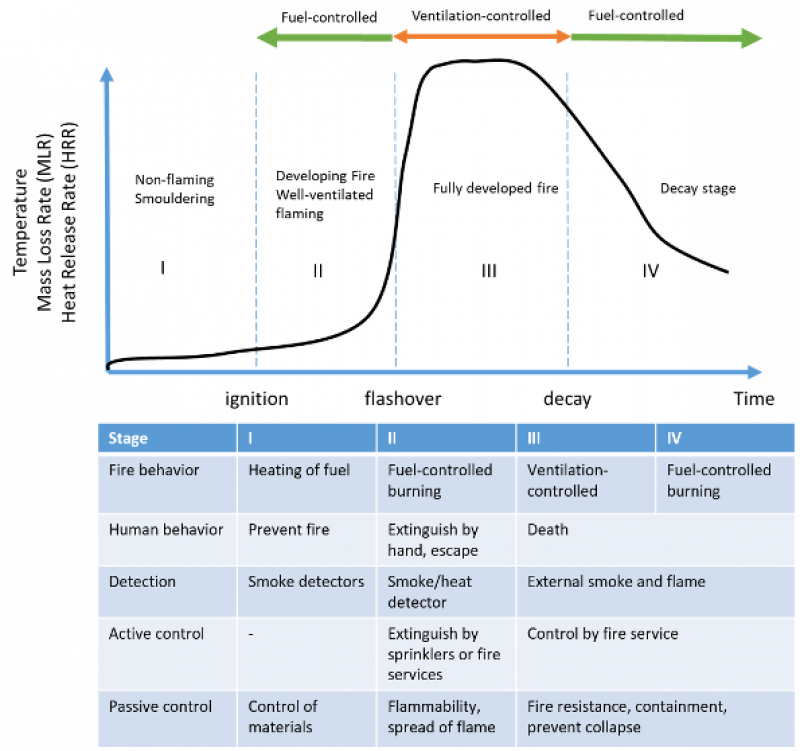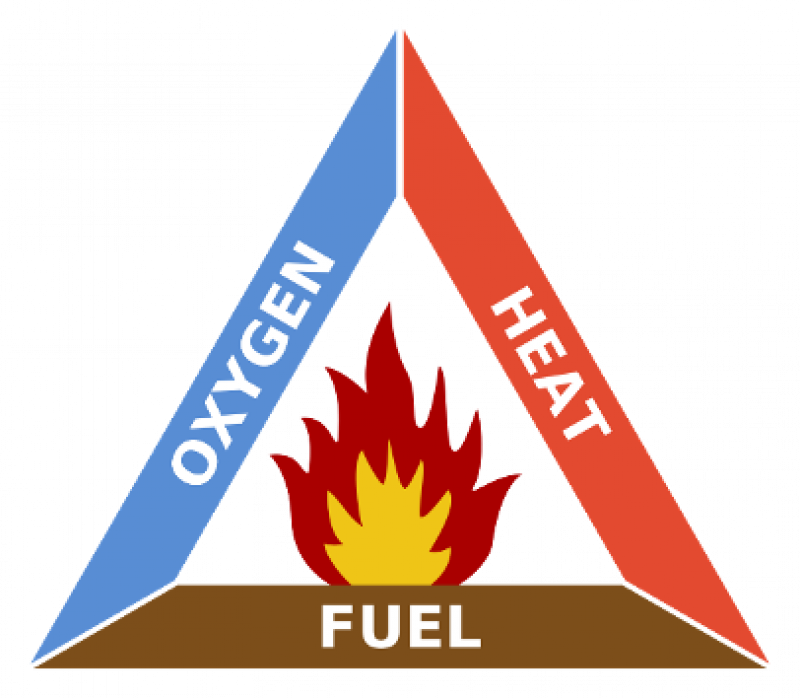Monday, April 4, 2022, a fire engulfed the Aceh's favorite shopping mall. Based on several news sources, the fire was reported to have been seen at around 11.30 WIB from the back warehouse on the 3rd floor. After that, firefighters were dispatched to control the blaze and by 17.30, the firefighters had done cooling and were sure that the fire had been extinguished.
However, at around 19.30, the fire grew again and even devoured the 2nd floor of the building. Until now, investigations are still ongoing regarding the source of the fire and no casualties have been reported in this fire. However, there were several firefighters who were said to have been reported to the hospital for shortness of breath due to soot; incomplete combustion residues that still have the ability to burn; shaped like smoke, and dark (soot).
This incident certainly makes us, as the people of Aceh, sad. If in previous years we could entertain ourselves by shopping for daily necessities or just enjoying J-CO or Chatime at the shopping center, this year we missed that moment.
About Fire
Fire is basically categorized as a risk. Therefore, it is very possible that this incident could have been prevented.

Figure 1. Graph of fire growth in fire events along with an explanation of the stages
The image above is a very iconic image, for us people who study in the field of Fire Safety Engineering. The figure shows the rate of fire growth in fires that occur in general. The best prevention that should be the concern of the building or facility manager is at stage 1. At this stage, the fuel undergoes an initial pyrolysis process where the combustible particles of fuel begin to evaporate and form volatile matter to initiate flames. ).
At this stage, the availability of detectors, especially smoke detectors, has an important role. This is because this stage is the stage where smoke or soot begins to develop and the flame if it grows, is still of very small strength or can be referred to as a light fire (measured by the heat release rate). It is at this stage that further fire prevention should be implemented. By knowing the location of the fire through a fire alarm connected to a smoke/heat detector, the quick response officers in the building (Fire warden, security, or employees closest to the source of the fire) must immediately extinguish the source of the fire with a Portable Fire Extinguisher (PFE) which should be available.
So far, the author has underlined the 4 most crucial simple elements to prevent fires; Smoke/heat detector, fire alarm, fire warden, and PFE. Not coincidentally, these four things are the four elements that can be said to be the cheapest to be applied to every building. The author is well aware that many of us still think that investing in fire protection equipment is a waste of time.
The author often finds assumptions such as “oh, why is it installed, people end up not using it either. If we install serious fire suppression equipment, it means the same as we expect the fire to happen” or similar things that quite underestimate the risk of fire. According to the author, it is time for us to realize that the risk of fire is a serious matter and cannot be underestimated.
For business actors who are still very much considering a tight budget, the author hopes to start considering these four aspects seriously. Even if possible, the installation of more advanced tools such as water sprinklers, smoke extraction, fire doors, fire sealants, and intumescent coatings would be much better. If the advanced equipment is functioning properly, the workload that firefighters have to face in stage 2 and beyond will be significantly reduced.
Of course, this is not only beneficial for officers, but also for business owners where the losses that must be accommodated are minimal and the business can get back on track quickly. And what the author also feels is necessary to underline in the fire growth picture above are stages 3 and 4.
At this stage, the fire is extinguishable. What can be done is only controlling (control by fire service) so that the fire does not spread to other parts. Therefore, the procurement of a good and correct protection system in buildings will inhibit the growth of fire in stages 3 and 4 which of course will provide far greater losses than the events of stages 1 and 2. -The four essential elements above are also sufficient to inhibit the growth of the flames towards the last two stages
Then, many are also quite skeptical and ask,
"Why can the fire reappear and grow after being extinguished?"
Re-ignition, smoldering to flaming transition
Well, fire is a complex process that involves 3 main aspects to occur; Oxidizing agent (air, in the event of a general fire), the Amount of activation energy (heat) sufficient to start the oxidation reaction, and fuel.
In a fire that occurs in a room (compartment fire), it is very likely that the combustion process that occurs is incomplete combustion. With the characteristics of Suzuya Mall as a shopping area, the cargo inside consists of various types of combustible materials; both from everything made of plastic, rubber, or flammable liquids. Another thing that makes shopping malls must pay special attention to the process of designing and installing a fire protection system is the configuration of loads that are very diverse: some are arranged on a rack (racking configuration), and some are stacked in the form of piles (piling configuration).
This makes the spread of fire very easy and leaves a very large gap for the re-ignition phenomenon to occur. The re-ignition phenomenon can occur due to the availability of the three elements in the fire triangle mentioned earlier, even though the fire condition based on visual vision is already in the decay stage (stage 4).
Piles of combustible goods will generally leave spaces (pores) in the pile that allows air to infiltrate the interior of the pile. When the inside of the pile still has sufficient heat (either due to confinement heat or from smoldering coals), then the coals can turn into a flaming fire because they have enough oxidizing agents and heat to burn the residue. materials that still have combustible properties.
The phenomenon of turning coals into flames is called the smoldering to flaming (STF) phenomenon [1]. This is the reason why throwing cigarette butts that are still burning is very dangerous because basically, smoldering fires can last a very long time (persistent) [2] when compared to flaming fire because the oxidation process takes a long time and burns fuel very slowly.

Figure 2. Triangle of fire

Figure 3. Illustration of the process of smoldering to flaming transition
Aftermath
I hope that this paper will be read by all Acehnese people, especially those in positions who have the authority to make policies. Based on the author's knowledge, at least, this is the second major fire after the Aceh bank fire (2015) which will have a large social impact on the community. With these two incidents alone, the author is bold enough to say that the fire problem cannot be considered a small thing just because statistics show that the fatalities are minimal (compared to other disasters).
"Availability of strict regulations regarding fire protection system requirements in our regional Qanun will be a fairly good foundation in dealing with fire risks in the future."
That was the first thing the writer imagined because it was difficult for the writer to access the related qanuns published by the provincial government through search engines on the internet. However, the author finally managed to find qanun belonging to the Aceh Singkil district government no. 8 of 2015 in article 47, article 55, and article 66 requires the presence of a fire protection system, in buildings, which must refer to several SNIs. In fact, in the qanun, the presence of a fire protection planner is explicitly stated as one of the providers of planning services that must be included in the technical planning of buildings.
After finding these facts, the author is quite optimistic that based on written regulations, our province is aware of this. This is certainly very good if it is supported by the implementation and implementation that is carried out and considered infield practice. One area that I think is quite good in the process of supervising the planning of fire protection systems in Indonesia is DKI Jakarta. The DKI Provincial Government has a Building Expert Team (TABG) whose function is to conduct assessments and assessments of building plan proposals offered by contractors or managers as stated in DKI Governor Regulation No. 130 of 2012.
This team consists of three elements, namely: experts from the industry (professional), academics, and experts from government institutions themselves. Until now, the existence of the DKI TABG is still ongoing with the Decree of the Governor of DKI No. 381 of 2021 regarding TABG for the period 2021 – 2023. One of the focuses of TABG is fire protection systems, both active and passive tanks. The author since two years ago has been trying to find out the existence of the TABG for the province of Aceh, especially the members who handle the fire protection system, but this has so far not found positive results.
If the team has not yet been established for the province of Aceh, the author hopes that the officeholders will consider the presence of the team for the province of Aceh. With better supervision and implementation of regulations, it requires building managers to really pay attention to the rules of implementing a fire protection system and also its operation per applicable Fire Safety Engineering standards and rules.
Thus, the authors believe that similar fire incidents that can have a social and economic impact will be easier to handle and minimize. If such a team were available for our province (Aceh), then the authors believe that they know better what they have to do in their work after this incident than the authors themselves.
Reference
[1] M. A. Santoso, E. Christensen, J. Yang, and G. Rein, "Review of the Transition From Smouldering to Flaming Combustion in Wildfires," Frontiers in Mechanical Engineering, vol. 5, 07/24 2019.
[2] G. Rein, "Smoldering combustion," in SFPE Handbook of Fire Protection Engineering, ed: Springer, 2016, pp. 581-603.
Augustina Williams
Hi, ignisfirerisk.com'admin, I saw your website address on this page. Does this website have any connection with ignisfirerisk.com? Take a look:https://afshinkalhori.ir/dream-destination Curious what you think! Best, [Afi] Also, if you ever need help with website design, SEO, or optimization, feel free to reach out: afsoriproject@gmail.com or Telegram: +1 814 975 4523 | whatapp: +1 (615) 561-8321 ------------------------------------- Also there is helpful link for making money easily with only share your internet. Just join and earn! https://afshinkalhori.ir/pawns.app